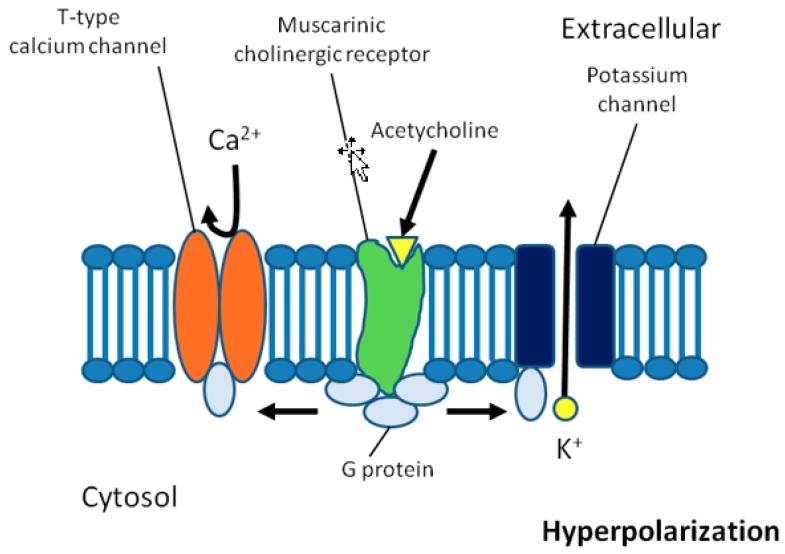Figure 2.
Potential role of the autonomous nervous system in the pathophysiology of atrial fibrillation. The cholinergic anti-inflammatory pathway, which is mediated by the parasympathetic nervous system via the vagus nerve, leads to secretion of acetylcholine, which binds to muscarinic cholinergic receptors. The receptors open potassium channels through stimulatory G proteins and close funny channels and T-type calcium channels through an inhibitory G protein. This leads to hyperpolarization, shorter duration of action potentials, a shortened effective refractory period, and a higher susceptibility to reentry at sites where acetylcholine is released in the atrium. The atria are only sparsely innervated by the sympathetic nervous system, which may also be activated during inflammation.

